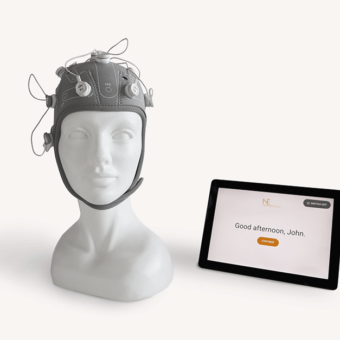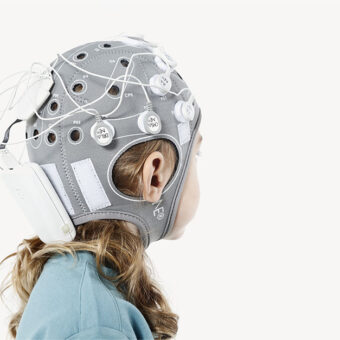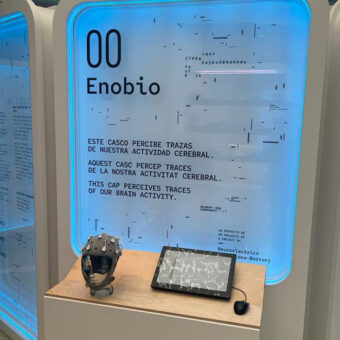A few days ago, we posted in the blog a discussion on consciousness. We gave an overview on the definition of consciousness. While humankind has struggled with this formidable question for millennia, recent developments in neuroscience study, model, and aim to quantify consciousness. It is precisely this last aspect that raised my interest these days, namely how to quantitatively establish a consciousness scale based on EEG. In this context, it is worth mentioning a recent special issue of the journal EEG and Clinical Neuroscience. Such metrics are of enormous interest not only from a philosophical and theoretical point of view, but from a clinical one, given the important consequences that a right diagnosis has in the treatment and care of people with consciousness disorders, e.g. locked-in, coma, vegetative state patients.
The newest published measurement procedure
In the most recent work dealing with this question, a procedure described by Casali and colleagues is based on the application of a TMS pulse to subjects. After this the response of the subjects’ brain is measured with EEG. The measured signals are then represented through a binary two-dimensional map (aka an image) related to the connectivity in the brain. An algorithm that we use daily in our computers for compressing files, i.e. this used for zipping files, is then applied to measure the complexity of the binary map with a unique index denoted as Perturbational Complexity Index (PCI). The more complex the map is, the more conscious the subject. An interesting aspect of the procedure in this paper is that it has been consistently applied to subjects with very different consciousness levels, e.g. anesthetized, in vegetative state, healthy.
Other EEG based indices or measurements
Already for years neuroscientists have related activity in the low gamma band (30-45 Hz) and its coherence with consciousness and various cognitive processes. Also the alteration of the gamma band rhythm has been observed in so-called disorders of consciousness. However no unique and general index as the PCI has been proposed so far based on the spectral analysis of this particular high band.
The utilization of the power in slow waves as a characterizing index in anesthesia is neither generic. Hence, the anesthesia group in Oxford has found that activity in a very low band – SWA 0.5 to 1.5 Hz – reaches a saturation threshold that correlates with the loss of consciousness when administering different anesthetic substances. This is important from a practical point of view, in order to individually establish the right anesthetic dosages.
Also Event Related Potentials, which we have discussed in older posts, have been related to consciousness levels. Hence Laureys and his Coma Science Group have shown that minimally conscious patients show the P300 ERP, which is related to the attentional and memory systems, when hearing their own names, but not when hearing other first names. The bad news is that patients in a chronic vegetative state, which present a lower consciousness level, have shown similar P300 responses. This seems to make P300 not a good indicator of the level of consciousness, at least on its own.
Consciousness relates with connectivity among brain regions. Given the capability of EEG to characterize it, some EEG measures of connectivity have been used so far in consciousness studies. One of the most recent ones is that proposed by King and Sitt in Paris, a measure related to the statistical concept of mutual information among EEG channels. Especially sharing information among distant regions can be used as a measure of increasing consciousness.
Connectivity analysis can be brought further in consciousness metrics by introducing the concept of causality. This has been exploited by Seth and his colleagues in Sussex, who have recently released a toolbox for analyzing time-series including EEG. These kinds of measures have been used in the literature for instance to characterize anesthesia effects. The consideration of causality in this work outperforms the mere analysis of synchrony, where the beta and gamma bands are the most discriminative EEG ones.
Machine Learning comes into play in consciousness studies based on EEG
As I commented in a recent post, Sitt and his colleagues have used different EEG measures within a machine learning approach. Hence, they try to classify features derived from ERPs and from spontaneous EEG. Among this last group they are using both single channel and synchronicity features based on spectral analysis and information theory. A total of 14 features are then classified to categorize healthy controls, minimum conscious and vegetative state patients. The paper has been accepted in the Brain journal for publication in the near future. This is a further step in the utilization of EEG as a consciousness-measuring tool.




